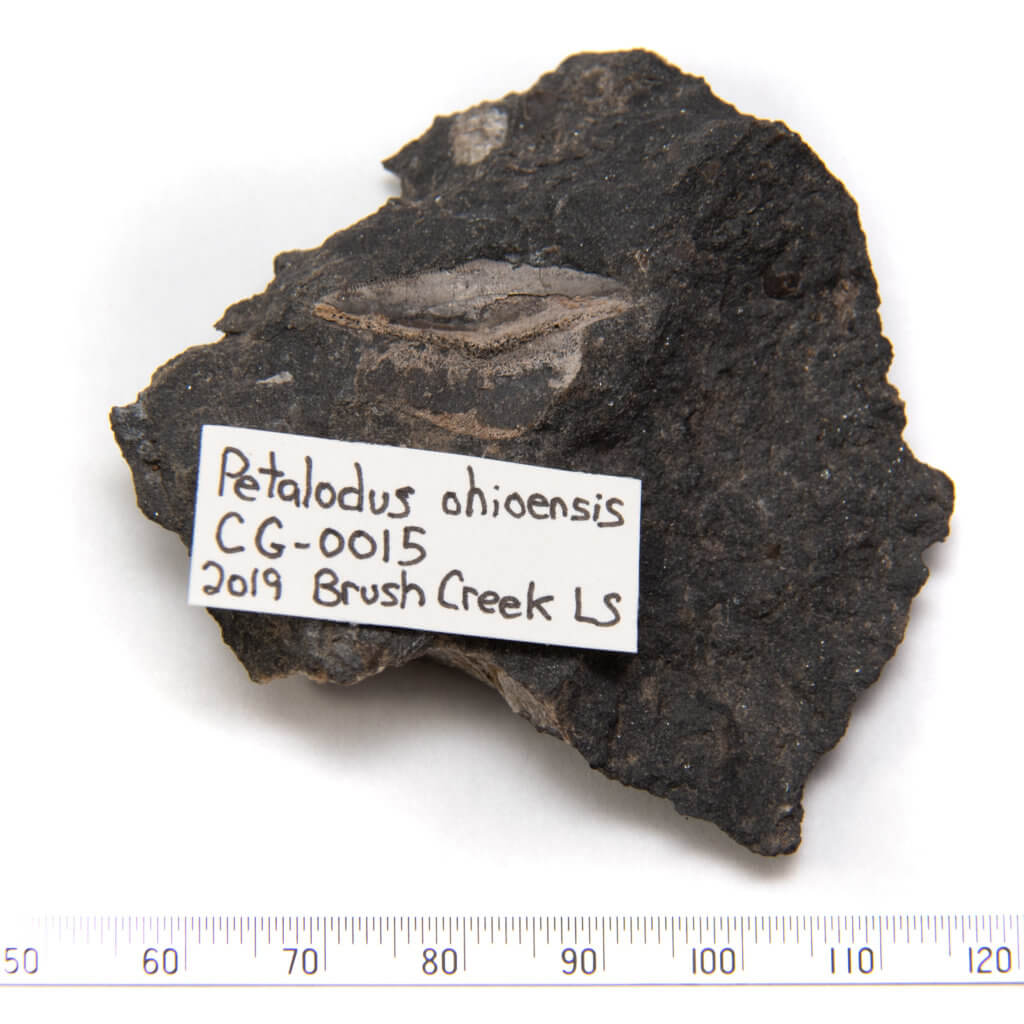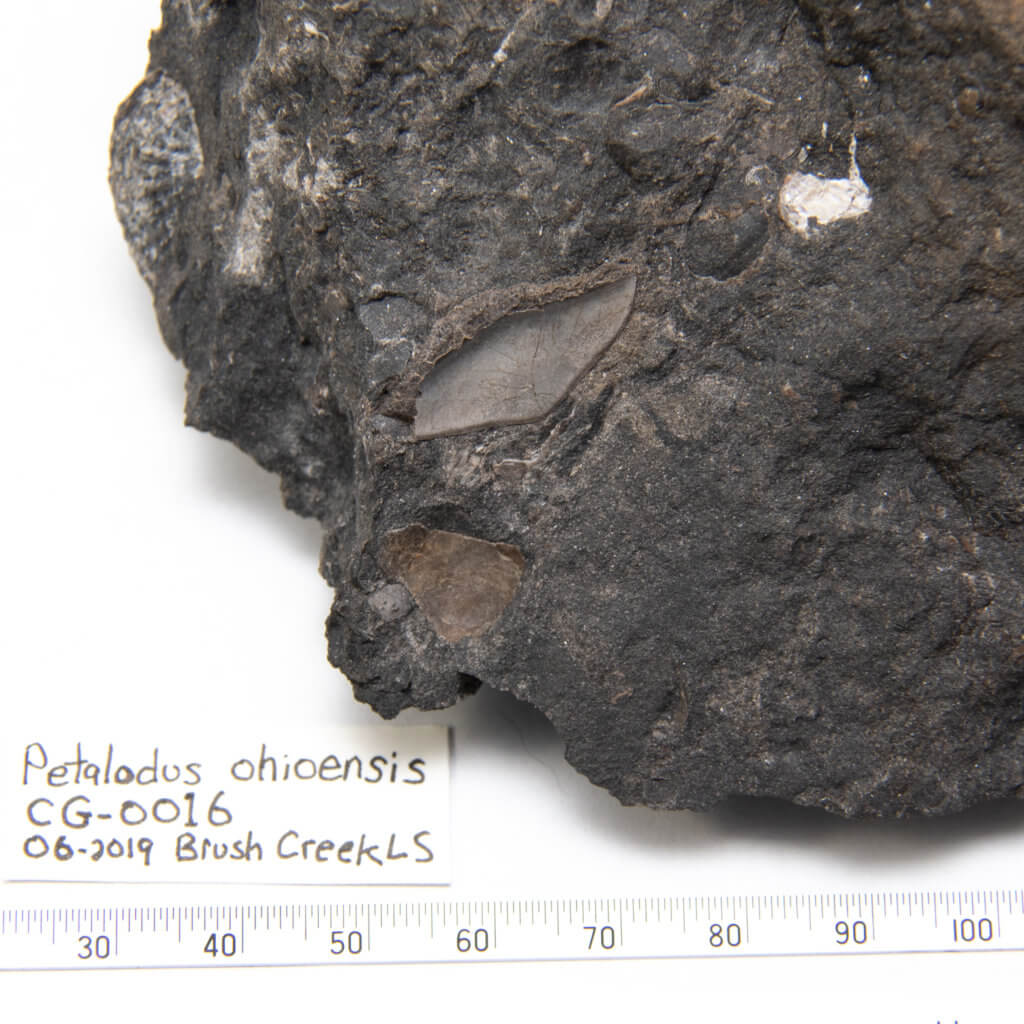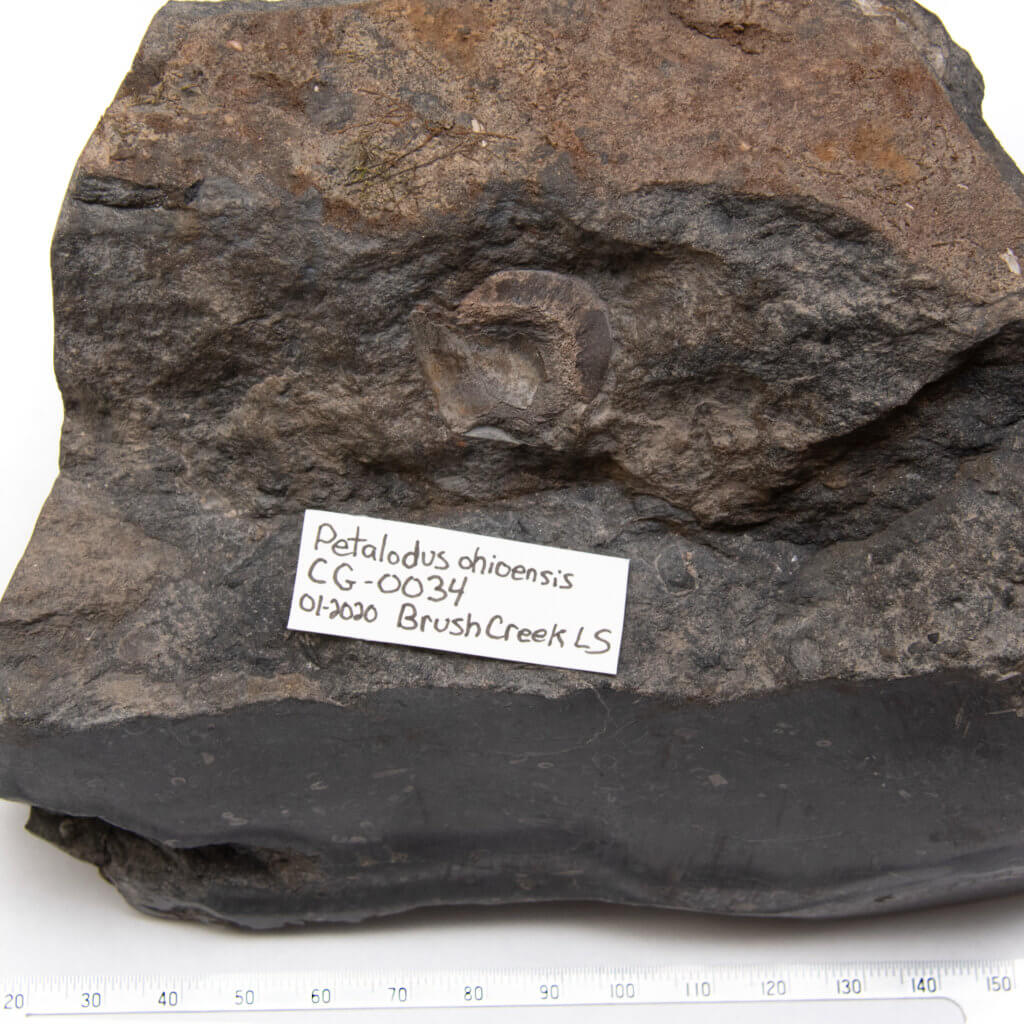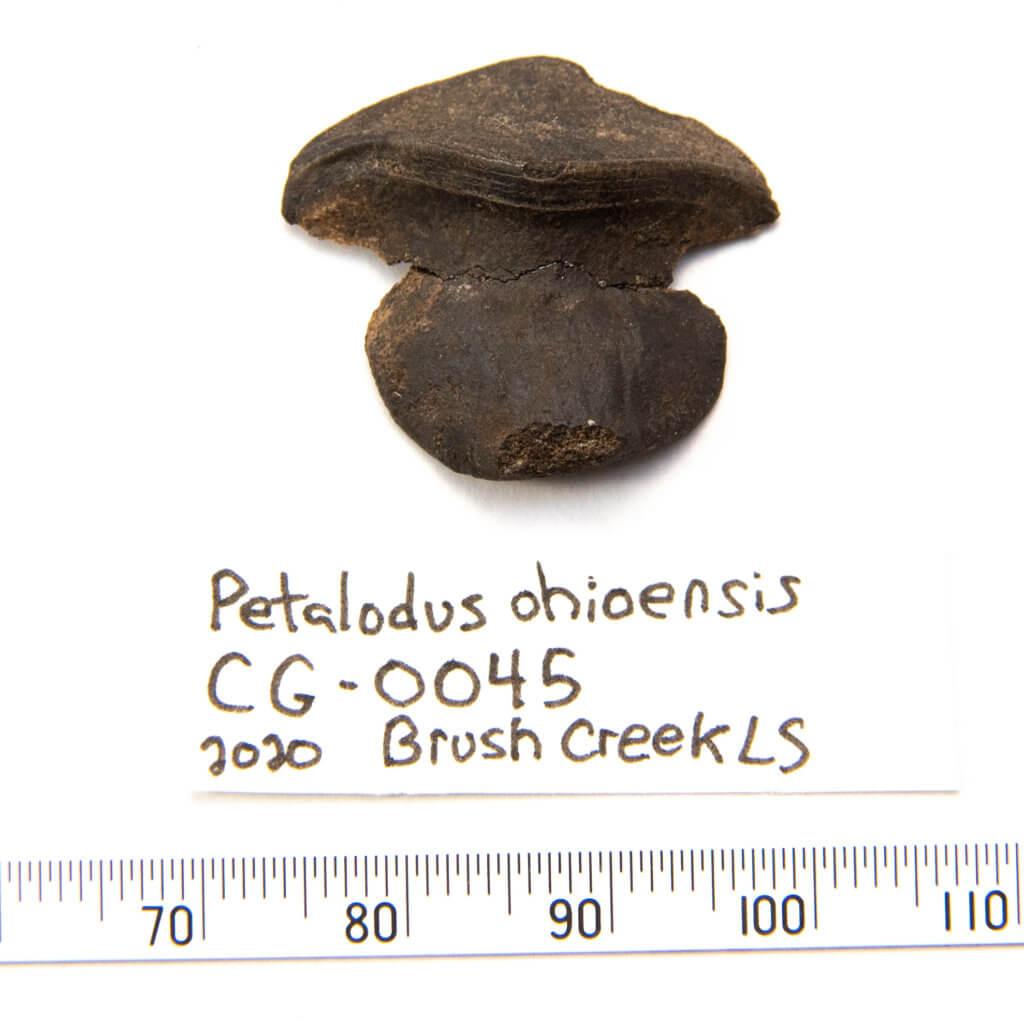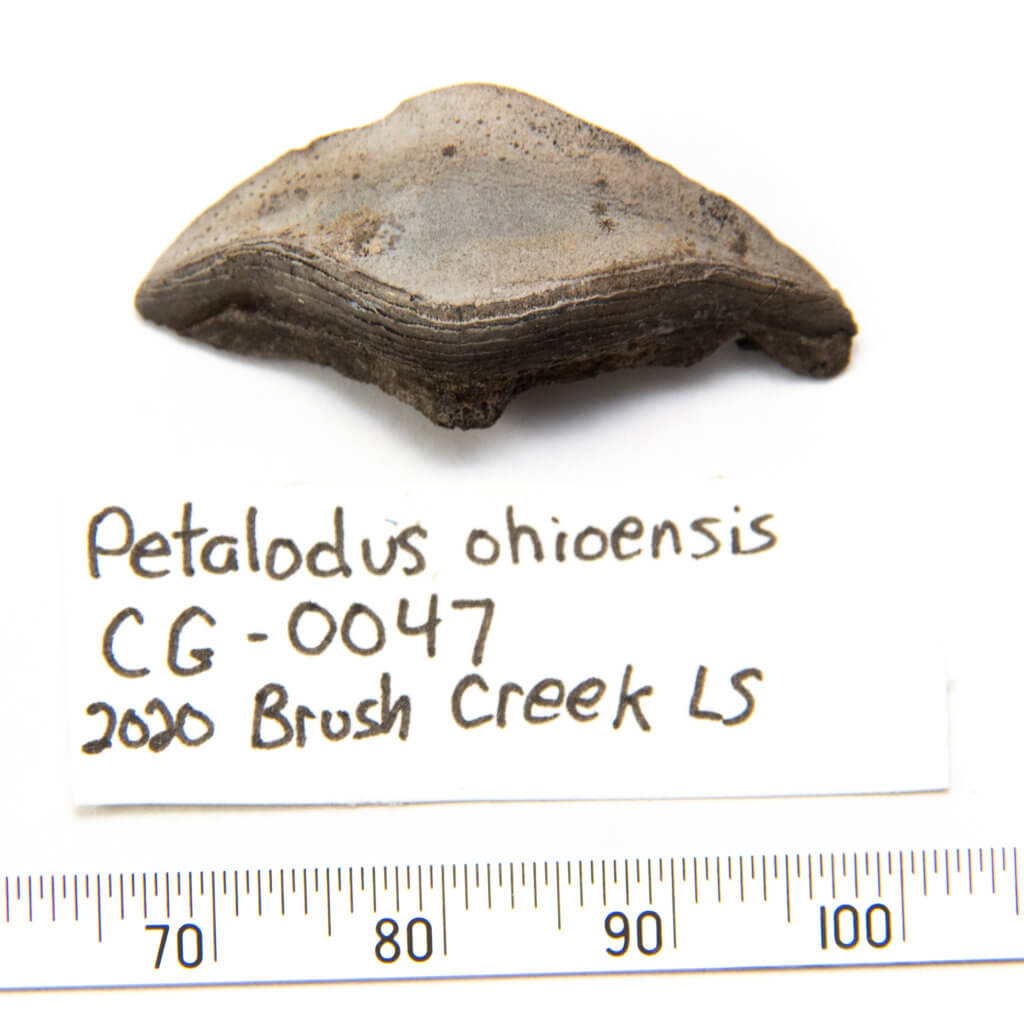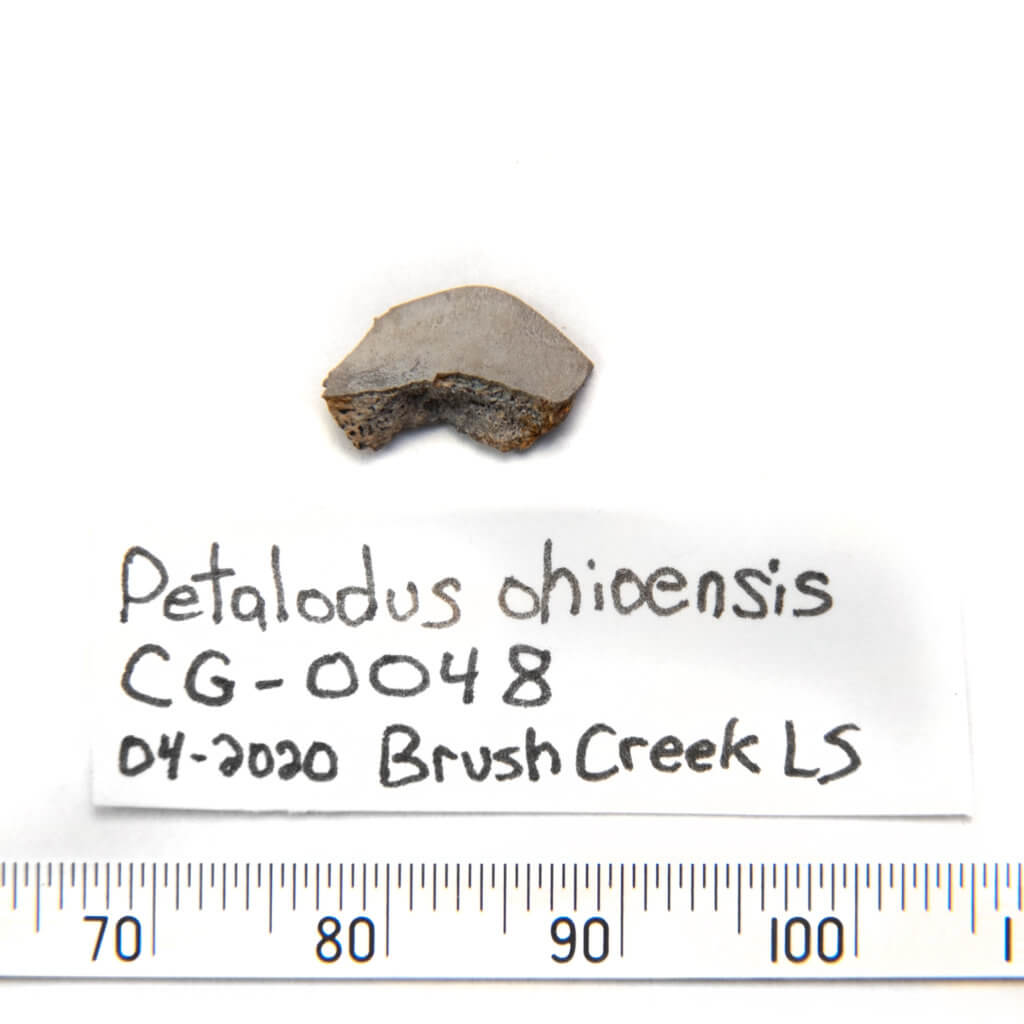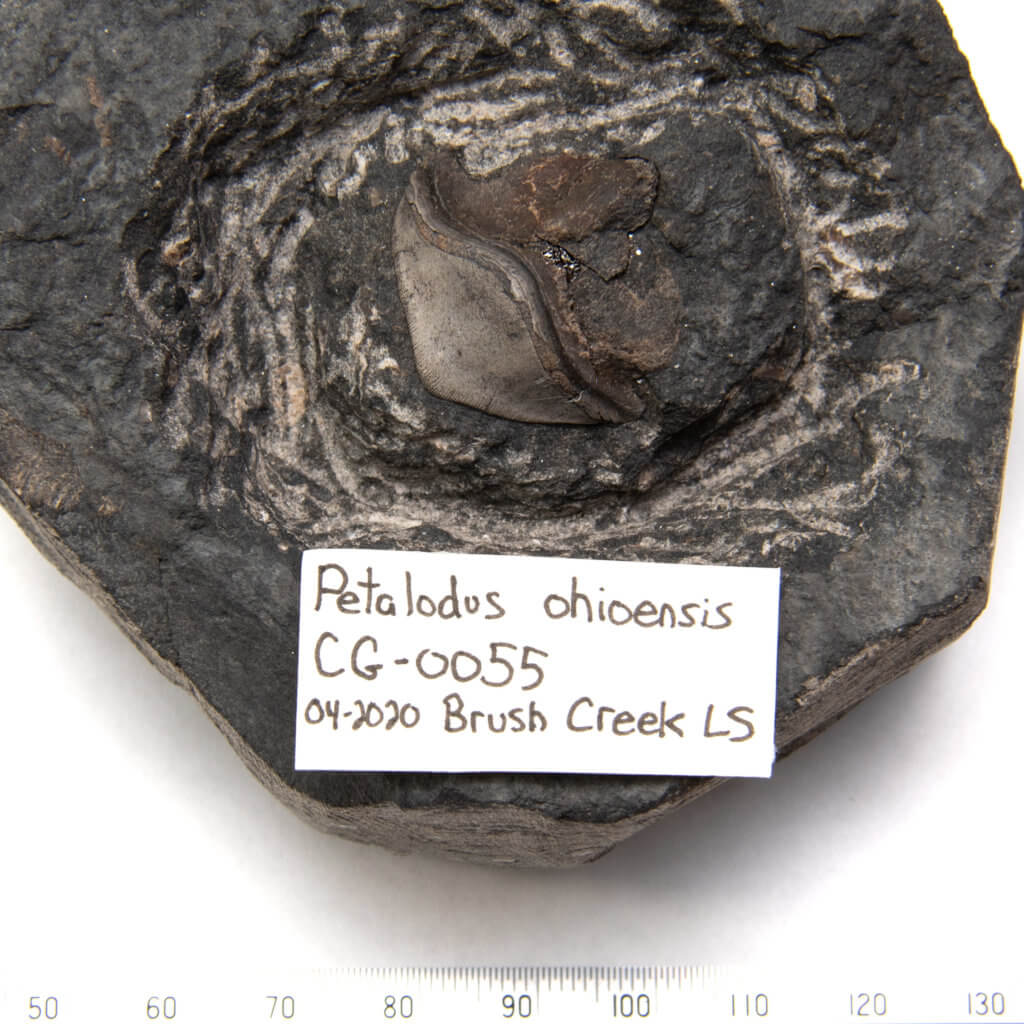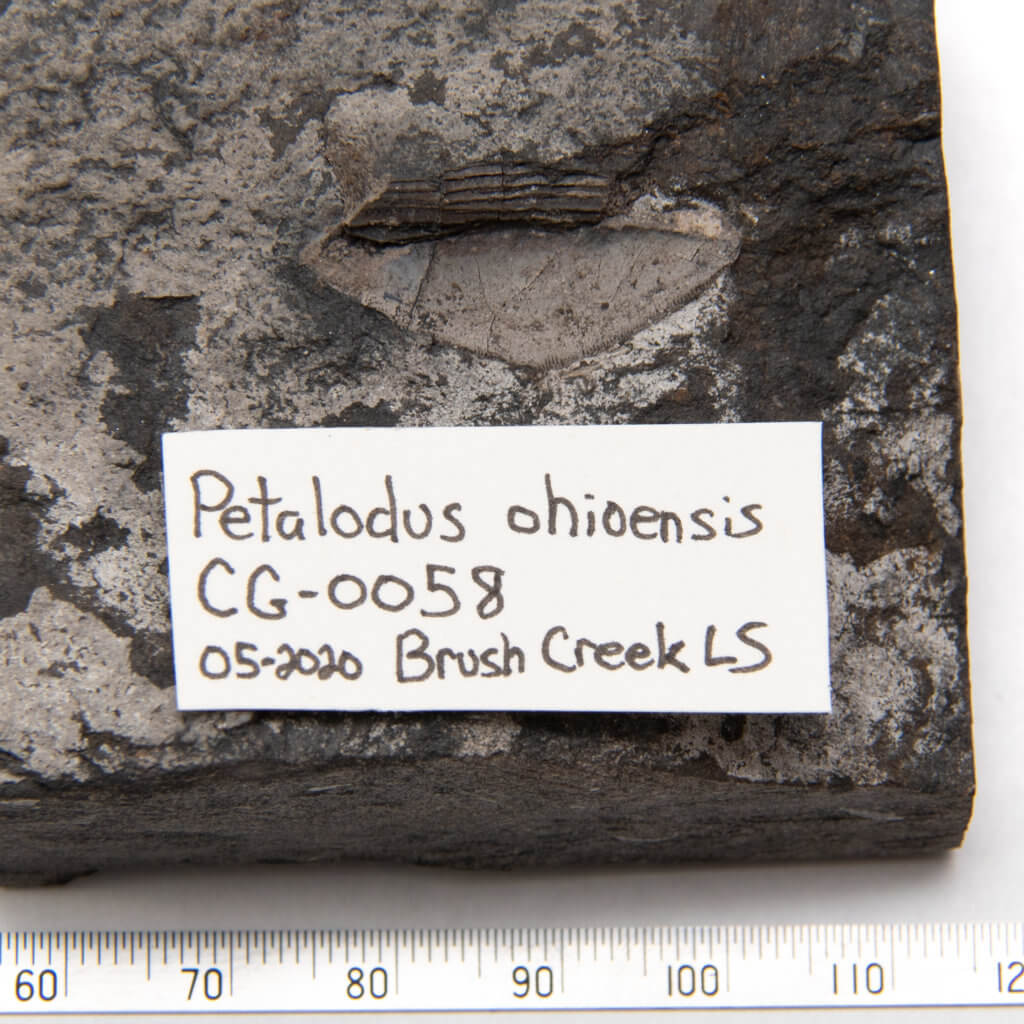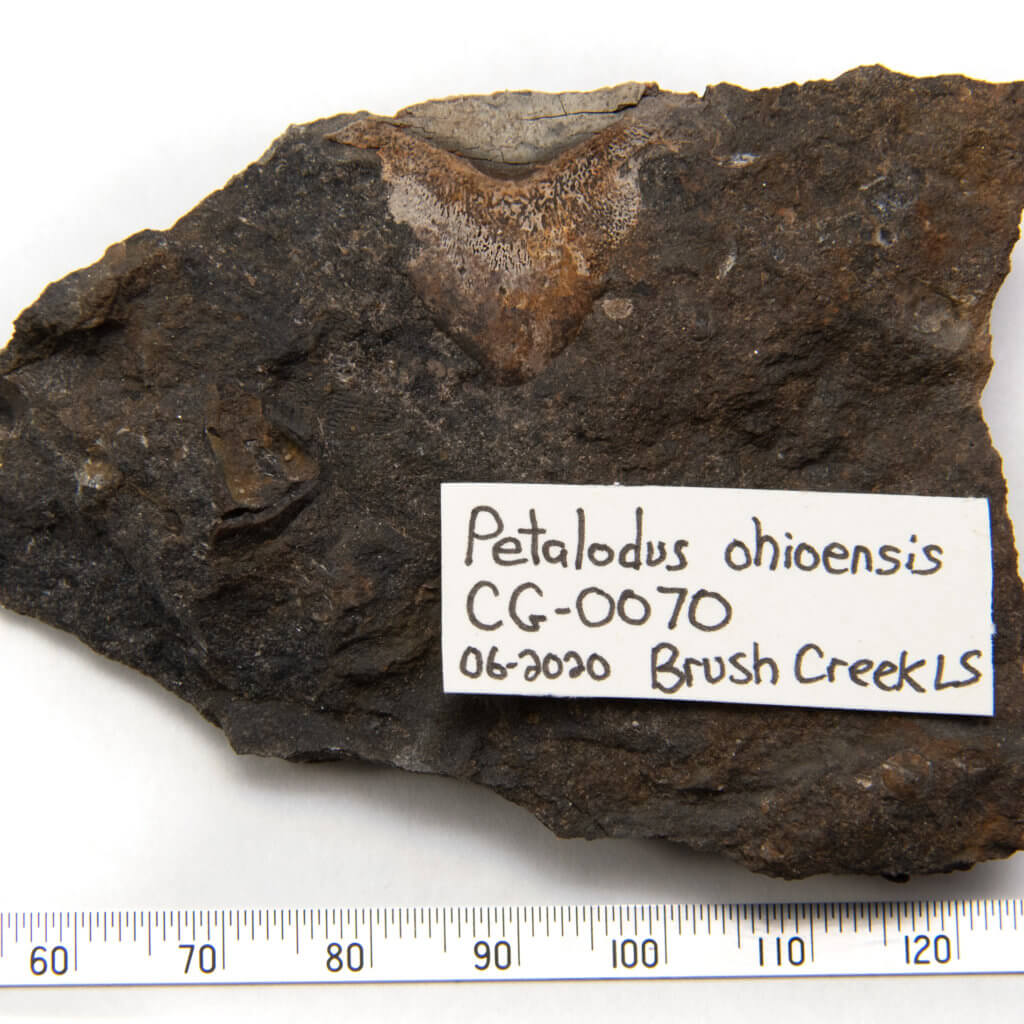The shark tooth, Petalodus ohioensis, is the most common vertebrate fossil found locally. I have collected twelve specimens from the Brush Creek Limestone and one from the Pine Creek Limestone.
I have a comprehensive live research article in general on the entire genus, Petalodus, available on this website. Click to view Petalodus Research. I go through and review the holotypes of over fifteen different named species, and am actively trying to track down modern holotype photos of each one. It is a work in progress, and I hope to take the research and publish it somewhere in print one day.
Collection Location
The Pine Creek specimen was collected a number of miles North of my location, but generally the same area. All these are limestone layers that occur in the Glenshaw Formation. The Pine Creek is younger than the Brush Creek. These limestone layers are a result of cyclotherms. These were largest from intrusions and extractions of sea water in an area. As planet Earth heats up, more sea ice melts and the seas rise. This happened somewhat quickly and the sea persisted long enough to create a layer of limestone around 1 foot thick locally.
Petalodus must have patrolled local waters and like modern sharks, lost their teeth. Already created using minerals, these teeth were easily fossilized in the sand and mud at the bottom of the ancient sea. Unlike most recovered fossils, these were simply a small part of the whole creature.
What did Petalodus look like?
Petalodus suffers from having a limited amount of recovered type of material. So far in the nearly two hundred years the genus has existed, only fossil teeth have been found. No one yet has recovered an articulated set of Petalodus teeth, nor have they found any recorded remains of the creatures body. These early relatives of modern sharks likely had a cartilage skeleton, further making preservation difficult. As I break part the large rocks locked with calcite and other fixers, the argonite and calcite mollusk shells are what show up easiest. Fortunately, most Petalodus teeth are well preserved. They easily show even the smallest serrations in great detail.
Recovered teeth vary in width and height. Stemming from this variation, a number of different species were designated in the late 1800’s. Fossil plants often suffer from this same problem. Given a common fossilized carboniferous fern tree, you can quickly see this at work. The bark, leaves and even the roots are listed as a separate genus or species.
Therefore we can conclude that nobody really knows what Petalodus looks like, yet. They are apparently in relation to modern sharks based on the general tooth shape. Even the genus itself had its name changed. The first recorded specimen was named Chomatodus acuminatus, later changed to Petalodus acuminatus (Agassiz 1836) after.
Any reconstructions that exist are just based on relative genus. These other genus are also mostly known by their teeth. However, there are a few distinct recoveries of bodies from these related genus. Apparently one is well preserved. The other, well it is a mess. I don’t have the information on these here now, but I plan to finish the research on these and record it in the general Petalodus research article I have been writing. A few articulated jaws full to teeth from related species are also available.
Petalodus ohioensis Group Photo with Scale
I enjoy taking photographs of groups of specimens I’ve collected that are related. I have shot photos of Metacoceras and other Cephalopods in the past. Every time I find a tooth from this genus, it’s very exciting. I was once reserved about cleaning and prepping these types of specimen. I am growing more comfortable removing a few from the hard limestone matrix they are locked into.

The Individual Specimens
Below is a photo of each specimen by itself. Clicking on any of the photos will launch the larger version.
Individual Petalodus Posts
Each new specimen gets a separate write-up. As the number increases, I may start doing single posts containing more than one in the future. Each tooth is measured for height and width and given an identification number.
| Catalog ID | Specimen Name | Crown Height | Crown Width |
|---|---|---|---|
| CG-0015 | Petalodus I | 6mm | 23mm |
| CG-0016 | Petalodus II | 9.5mm | 24mm* |
| CG-0029 | Petalodus III | 8mm | 28mm* |
| CG-0027 | Petalodus IV | 10.5mm | ** |
| CG-0034 | Petalodus V | 14mm | 27mm* |
| CG-0038 | Petalodus VI | 5.5mm*** | ** |
| CG-0045 | Petalodus VII | 10mm | 25mm |
| CG-0047 | Petalodus VIII | 13mm | 31mm |
| CG-0048 | Petalodus IX | **** | ** |
| CG-0055 | Petalodus X | 11mm† | 28mm |
| CG-0058 | Petalodus XI | 8mm† | 27mm |
| CG-0070 | Petalodus XII | **** | ** |
| CG-0087 | Petalodus XIII | 9mm | 23mm |
| CG-0102 | Petalodus XIV | Coming Soon | Coming Soon |
| CG-0107 | Petalodus XV | Coming Soon | Coming Soon |
* – Measured based on symmetry. One side broken/obscured.
** – Unable to measure, both sides were broken.
*** – From the top of the distal crown tongue.
**** – Unable to measure, crown broken.
† – Measured from the labial side.


